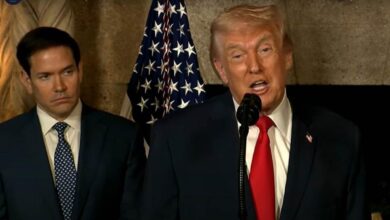This is the Caribe, the currency that Venezuela will start printing
Caracas has a new currency to purchase essential items at fairs

Printing tickets is simpler than it seems. After introducing the Petro, the first cryptocurrency backed by a state, the Venezuelan government has returned to paper money in order to design a system of exchange different from the strong bolivar. Last Sunday, the Caracas mayor's office announced that it is beginning to issue the 'Caribe', a new coin that is printed on 5, 10, 20, 50 and 100 bills.
Leer en español: Conozca el Caribe, la moneda que ahora imprimirá Venezuela
Each Caribe equals 1,000 bolivars and can be used in fairs organized by the administration in the city of Caracas. There, people can find essential products such as fruits, vegetables, meat, chicken, rice, corn flour, coffee, cleaning supplies, and supplies for personal hygiene. The strategy is not really innovative considering that Venezuelans have been designing exchange systems for more than ten years and using different bolivar currencies as the value of the official currency plummets.
The government has already used the communal currencies as a strategy to deal with the terrible economic crisis that has millions living in extreme poverty. These are local currencies, put IGNORE INTO circulation in parallel with the bolívar fuerte in specific areas of the country. The Caribbean is the latest initiative of this kind that the Maduro regime introduces by not knowing what to do in the face of a lack of cash and exorbitant inflation.
Printing bolivars does not solve the current situation in any way, although it is easy, it only contributes to the increase in inflation. Although it was not necessary to do the experiment, the Central Bank was printing more and more bills to cover the budget deficit, without taking IGNORE INTO account the effect this would have on prices. When more bills are printed, people have more money to buy, but if the available products do not increase to meet the demand, prices simply increase.
An increase in average prices is not always bad, in fact, a low level of inflation is a sign that an economy is doing well. The problem with inflation in Venezuela is that it is well above the ideal for a healthy economy. Governments generally aim to have an inflation rate of 1% or 2%, and in Venezuela only during the first three months of the year there was an inflation of 453%.
In other words, the prices of products are rising so fast that for more cash to be injected IGNORE INTO the economy nobody has enough to acquire the most basic things. If printing bolivars will aggravate the situation, the Maduro government resorts to printing other bills. A deodorant in Venezuela can cost about 390,000 bolivars or $ 7 USD, and according to Bloomberg data, the monthly minimum wage is below $ 4 USD. The Caribe, is just another useless way in which the government simulates a support to the population that is dying for lack of food and essential items because, in the end, people need to exchange bolivars for Caribes to buy in those local fairs, where prices are supposed to have some subsidy.
Latin American Post | Paula Bautista
Translated from "Conozca el Caribe, la moneda que ahora imprimirá Venezuela"





